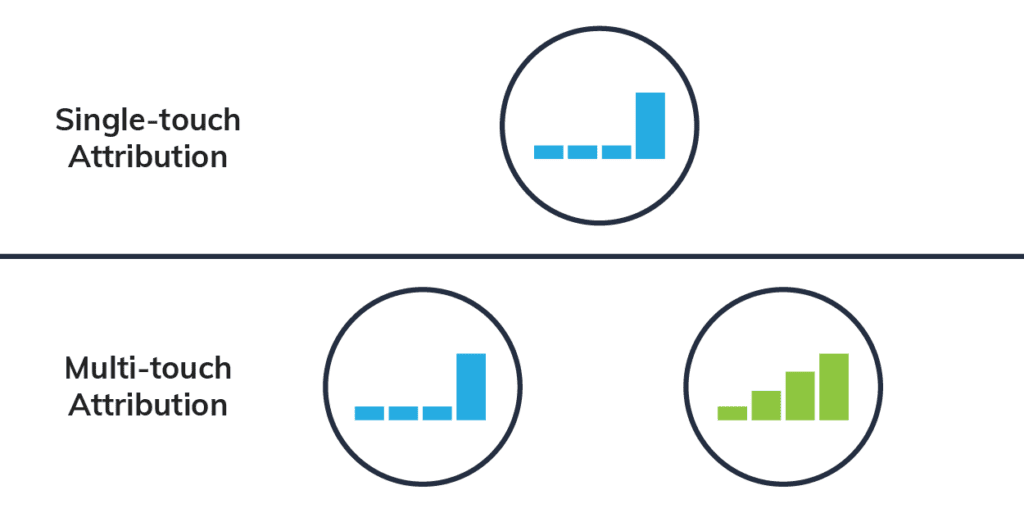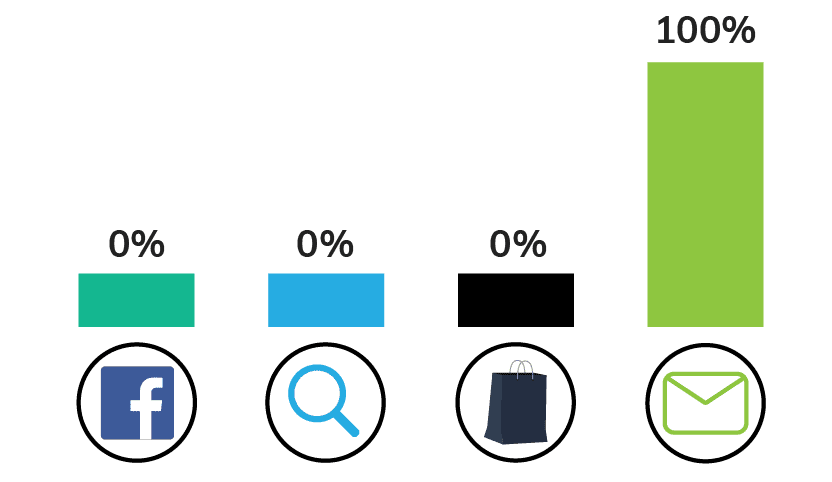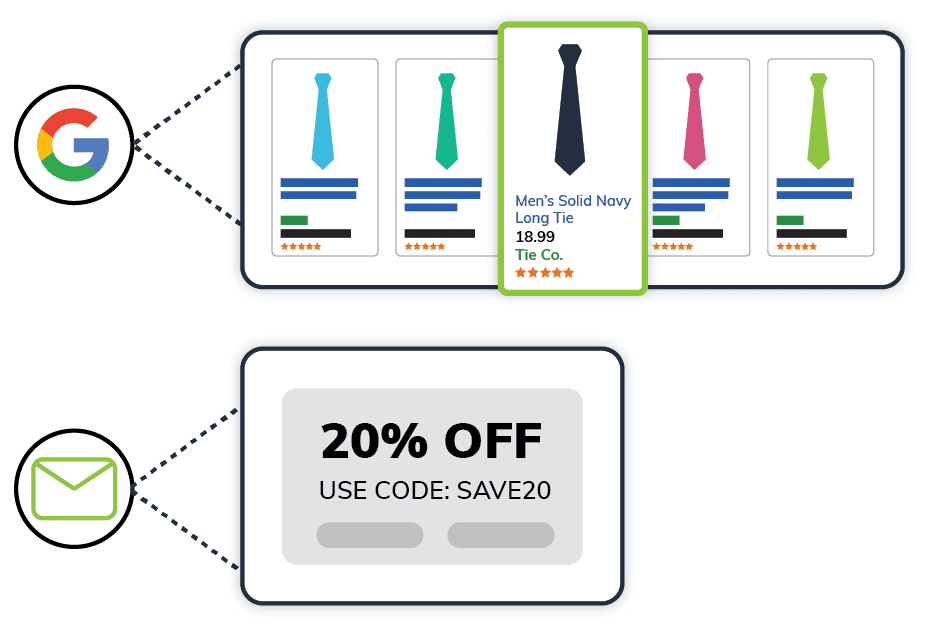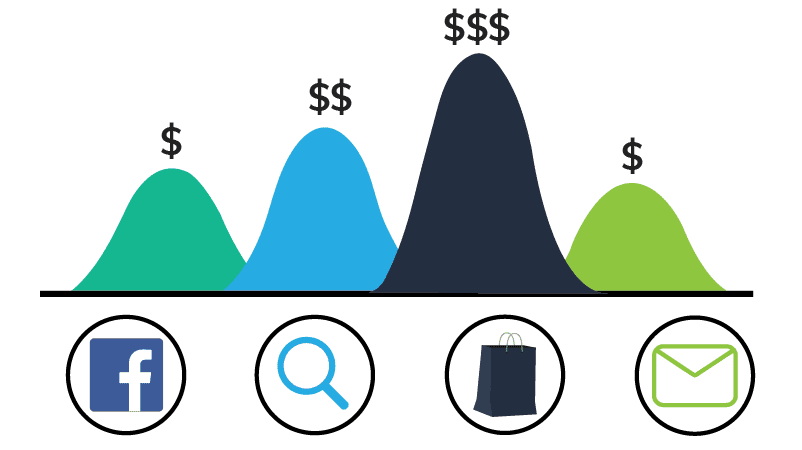What Does Your Path to Conversion Look Like?
When you buy something online, do you see an ad and immediately go to purchase that product? Probably not. If you do, either that was one really good ad (please point me in the direction of that advertiser), or maybe you need to work on your impulse purchasing habits—but, hey, we’re not here to judge—we’re here to tell you about multiple attribution models.
The point is, many consumers don’t have a clear path to conversion! It is rare that someone sees an ad and immediately purchases a product — and if they do, then they are probably already familiar with your product or brand. If that’s the case, then why do most advertisers only look at one attribution model?

That’s why at Omnitail, we use multiple attribution models — which allow you to take into account different touch points along the consumers’ path to purchase. What does that mean? How do you use it? You’ve got questions, we’ve got answers!

What Does It Mean to Use Multiple Attribution Models?

To use multiple attribution models, you simply compare two or more attribution models to determine the value of each touch point on the path to conversion. By using multiple attribution models, you gain meaningful insights into how each of your advertising channels directly or indirectly impact your sales.

Why Use Multi-Touch Attribution?
Traditional attribution assumes a set of rules to determine the value of each channel. For example, last-click attribution assumes that the last ad a customer saw gets 100% credit for the sale. First-click attribution assumes the first ad deserves full credit. The traditional method is flawed for a few reasons:
CONS OF USING ONLY ONE ATTRIBUTION
Some Channels Receive No Credit

With first click or last click, only one channel gets credit. This discounts the impact other channels can have on your customers. Consider a consumer sees a paid search ad, then clicks on an email you send, watches a Facebook video ad, and finally sees a remarketing ad before purchasing. With a first-click or last-click model, the credit for the purchase will go to either the paid search or remarketing ad, respectively. But who’s to say the Facebook ad and email don’t deserve any credit at all?
Of course, in the example above, attribution models like time decay or linear will take into account the Facebook ad and email. But this approach still only gives you a single representation of the data. Using multiple attribution models offers more than one viewpoint for campaign performance and provides much more holistic data for managing your campaigns.
Learn how attribution varies by channel in this infographic.
You Don’t Get the Full Picture

With multiple attribution models, you don’t simply use a single rule to determine which channels influence a sale. Instead, you compare two or more models—giving a much broader picture of performance. For example, you can compare a last-click model to an assisted model, which extends credit for a sale to all channels touched by the customer. Comparing a highly conservative model to a highly generous one provides both an upper and lower limit for performance, and is a much fuller representation of your ads’ potential.
Future Advertising Decisions Are Made on Incomplete Data

Because using multiple attribution models offers a more sophisticated approach to measuring the success of your advertising campaigns, you’re able to take into account the full impact of your efforts across every channel. Thus, you can direct spend to the channels which are backed by solid data! Channels that tend to introduce a customer to your brand (social media and branded ads) won’t be discarded entirely as they might be with a last-click model. Conversely, your email marketing won’t take all the credit for every sale, when in fact your paid search ads are the reason those customers are on your email list in the first place.

Imagine this: A shopper checks their email at work on a laptop. Then, when they get home they might scroll Instagram, Facebook, or Twitter. After dinner, they turn to their Smart TV to watch YouTube. Today’s consumer doesn’t just stick to one device. They encounter ads across many different platforms, channels, and devices — which makes it especially important to account for different touchpoints on their path to conversion! Multiple attribution models can help you…
PROS OF USING MULTIPLE ATTRIBUTION MODELS
Tailor Your Consumer Experiences

If you notice that sending an email with a coupon to a consumer right after they click on a Google Shopping ad increases conversions — you can capitalize on this. When you can see which channels specifically influence your customers, you can make their path to purchase a lot smoother!
Give Credit to Brand Awareness Ads

If someone sees your ad and immediately purchases your product, it’s likely they were already aware of or exposed to your brand and your products. That’s another thing you’ll miss out on with just one attribution model – the performance of ads that are primarily branding. With multiple attribution models, you can give credit where credit is due!
Direct Spend Wisely

Using multiple attribution models, you will learn which channels are the true powerhouses of your advertising arsenal. Then, you can direct spend to those channels and similar channels – and cut spend from the less productive touch-points.

How to Use Multiple Attribution Models?

Two or more models are used with multiple attribution models, as opposed to just one. At Omnitail, we typically compare a generous model to a conservative model.
On the conservative side, we typically report on the last-click model through Google Analytics. While it does under-report some revenue (because realistically customers are usually influenced by more than one touchpoint), it offers a good lower parameter for the impact of your ads.
For the generous model, we use an Assisted model, also through Google Analytics. This model offers more credit to more channels for each sale, and is a good upper parameter for the impact of your ads.
Obviously, this approach will vary for every business! Some prefer to be more conservative; others more generous. Facebook attribution is worlds away from Google Analytics Attribution, and even Google Ads! Some organizations also take advantage of third-party tracking platforms, which offer even more options for attribution. To see how other attribution models can help measure ad impact, check out our guide!
Still need help setting up multi-touch attribution for your business? Reach out to an Omnitail analyst today and we can help you out!








